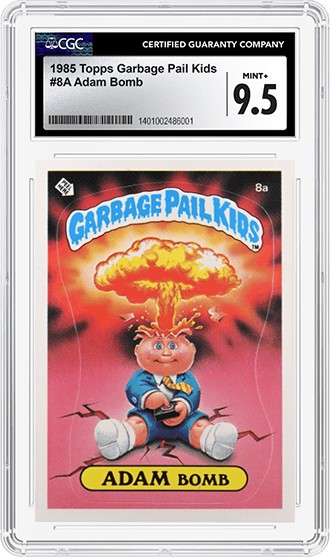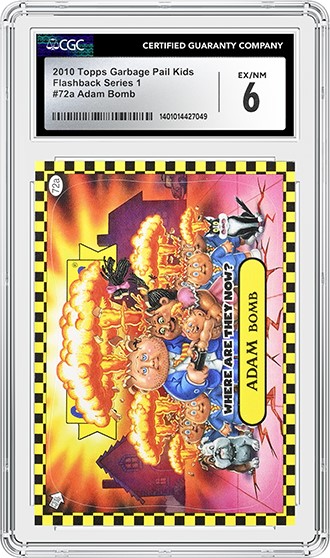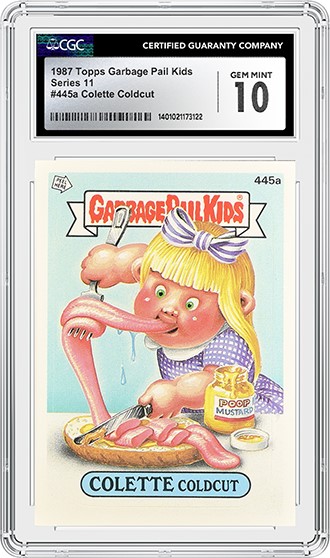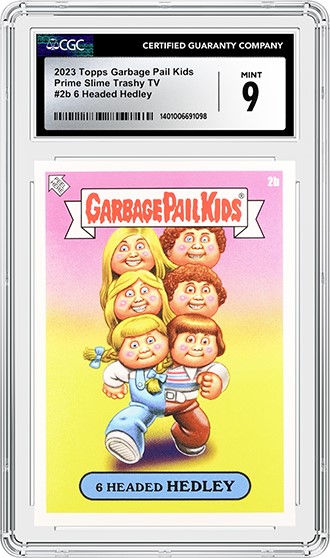Story Behind the Cards: Garbage Pail Kids
Posted on 7/11/2024
By
Raeann Calcutta
In the 1980s, pop culture collectibles such as comics and toys were having a boom worthy of being called a golden age. There was something for everyone — superhero enthusiasts could get their fix with comics or trading cards, while fashionistas were collecting Barbie dolls. In the meantime, though, there was one collectible card game (CCG) with more than enough wild and gross humor to entertain children while their parents cringed: the Garbage Pail Kids.
What is Garbage Pail Kids?
Garbage Pail Kids is a series of sticker trading cards produced by Topps. Conceptualized by Art Spiegelman, Garbage Pail Kids parodied another popular 1980s collectible: the Cabbage Patch Kids line of dolls. Instead of happy dolls, however, Garbage Pail Kids sticker cards depicted child characters having comic abnormalities, such as extraordinary deformities, gross traits or characters suffering horrible deaths. Each character has a name with humorous wordplay, such as “Adam Bomb,” alluding to an atomic bomb.
Topps released the first set of Garbage Pail Kids (Original Series 1) in June 1985 to critical success. Children clamored to get their hands on packs, so much so that stores quickly ran out of cards to sell. By 1987, Topps had released eight additional Garbage Pail Kids sets, and they didn’t stop there. Extreme demand for the series had Topps creating additional merchandise, turning the original sticker cards into a multimedia franchise including toys, movies, an animated series, Halloween costumes and more.
Trouble and Time Out
Unfortunately, not everyone was thrilled with the idea of children collecting and trading cards with vulgar scenes of children being decapitated or tortured on them. Schools quickly began banning the cards, citing them as distractions during class. Mexico banned the export and import of Garbage Pail Kids cards in 1988 due to the approval of a reform to the Export and Import Law, banning all representation of minors “in a degrading or ridiculous manner.”
Amazingly, Garbage Pail Kids became so popular that the rightsholders of Cabbage Patch Kids — at the time, Original Appalachian Artworks (OAA) — sued Topps for trademark infringement in 1986. They claimed that Garbage Pail Kids violated several trademarks of Cabbage Patch Kids, namely their logo design, product naming and doll-like designs. When the judge ruled in favor of OAA, Topps scrambled to work out an agreement with the company that allowed them to continue producing the Garbage Pail Kids cards. OAA agreed — as long as there were major design changes.
The Aftermath
Following the lawsuit, Topps continued to release Garbage Pail Kids sets, albeit with several design changes. Body modifications were made to the characters, making them more blocky and plastic-like. The banner on the newer Garbage Pail Kids cards went from curved to straight, and certain kid designs were scrapped.
Unfortunately, these changes weren’t well-received by the audiences who had fallen in love with the doll-like kids in the original series. By 1988, sales had declined as children either grew out of the fad or otherwise dropped the CCG for something else, and Topps decided to pull the plug after the release of Original Series 15. It wasn’t until August 2003 that Garbage Pail Kids would return to the market with all-new sets and the revival of some parts of the 1980s franchise, including a re-release of certain Original Series sets and a revival of the multimedia franchise.
Today, there are more than 30 Garbage Pail Kids sets spanning from 1985 to 2024. As of July 2024, CGC Cards has graded a total of 4,734 cards from the Garbage Pail Kids series according to the CGC Cards Population Report, with most of them being from the original 1980s series. The set with the most cards graded is Series 2 – English, with 824 total cards certified by CGC Cards.
About CGC
Since revolutionizing comic book grading in 2000, CGC has grown to include certification services for a vast variety of pop culture collectibles. These divisions include CGC Cards, CGC Video Games and CGC Home Video. CGC Cards provides expert card grading for sports cards, TCGs and non-sports cards. CGC Video Games is dedicated to video game grading for the most popular consoles, including Nintendo, Sega, Atari, PlayStation and more. CGC Home Video provides expert VHS grading in addition to other types of videocassettes, DVD, Blu-ray and more.
Stay Informed
Want news like this delivered to your inbox once a month? Subscribe to the free CGC eNewsletter today!



